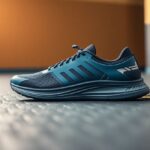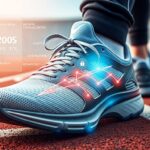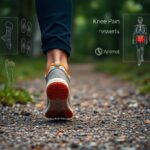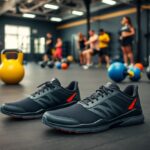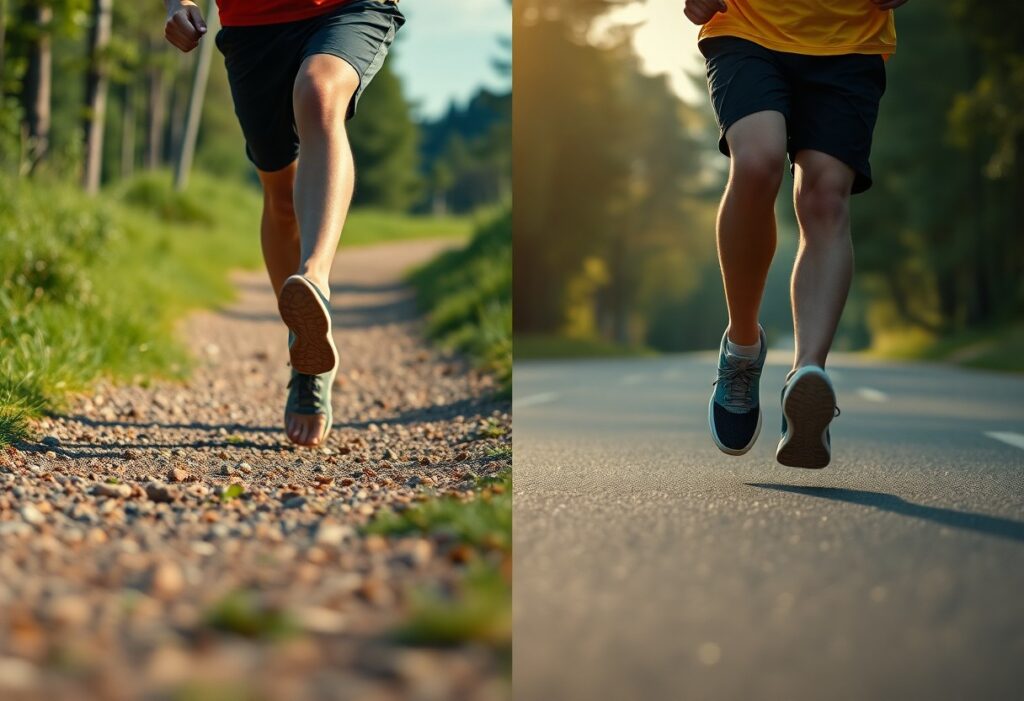
Are you curious about how your selection of running shoes impacts your running economy? This in-depth analysis explores the significant differences between barefoot running shoes and their cushioned counterparts, shedding light on how each type influences your athletic performance, efficiency, and overall enjoyment of running. Discover how different footwear options can affect your biomechanics, potential for injury, and energy consumption, empowering you to make informed choices that align with your personal running goals. Whether you’re a seasoned marathon runner or a beginner, understanding these differences can greatly enhance your training efficiency and overall enjoyment of the sport.
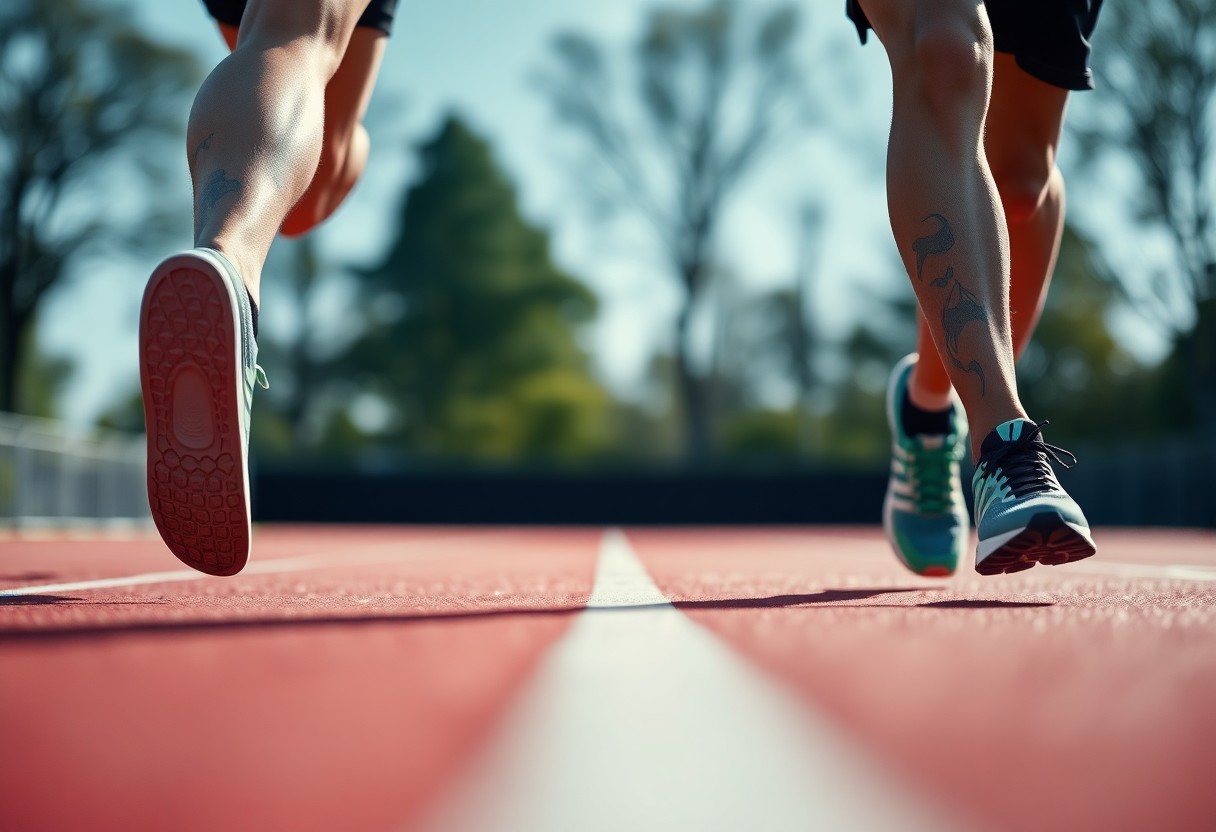
Investigating Running Economy: A Comprehensive Biomechanical Analysis
Delving into the concept of running economy requires a comprehensive understanding of the biomechanical principles that dictate how effectively your body uses oxygen while running. Key factors such as muscle activation, stride optimisation, and overall biomechanics play a crucial role in determining your performance. By examining elements like your footstrike pattern, flexion angles, and vertical oscillation, you can gain invaluable insights into how barefoot shoes may enhance or impede your running economy compared to traditional cushioned shoes. These elements can have a significant influence on your speed and endurance over the long haul.
Examining Oxygen Consumption Rates: Key Insights from Meta-Analysis
A detailed meta-analysis of numerous studies indicates that runners using barefoot shoes typically exhibit lower oxygen consumption rates compared to those who wear cushioned footwear. This intriguing observation implies that minimalist shoes encourage a more efficient running style, allowing you to maintain a faster pace while expending less energy. Such efficiency is particularly beneficial during long-distance events, where conserving energy can be crucial for achieving peak performance.
Ground Contact Time: How Foot Strike Patterns Influence Performance
Your ground contact time can vary significantly depending on your foot strike pattern, which in turn affects your overall running efficiency. Runners who adopt a forefoot or midfoot strike usually experience shorter ground contact durations, thus enhancing propulsion and minimising energy loss. Conversely, individuals with a rearfoot strike may face longer ground contact times, resulting in increased energy expenditure. Transitioning to barefoot shoes often encourages a more natural foot strike, which can further optimise your running economy.
Research shows that elite runners commonly achieve an average ground contact time of approximately 185-220 milliseconds, facilitating a rapid transition to the next stride and contributing to a more efficient running rhythm. As you shift towards barefoot or minimalist footwear, you might observe that adjustments in your foot strike lead to shorter ground contact times, ultimately enhancing your propulsion. This change not only boosts your speed but may also lower the risk of injury. Therefore, understanding your ground contact time and foot strike pattern can empower you to make informed footwear decisions that maximise your running performance.
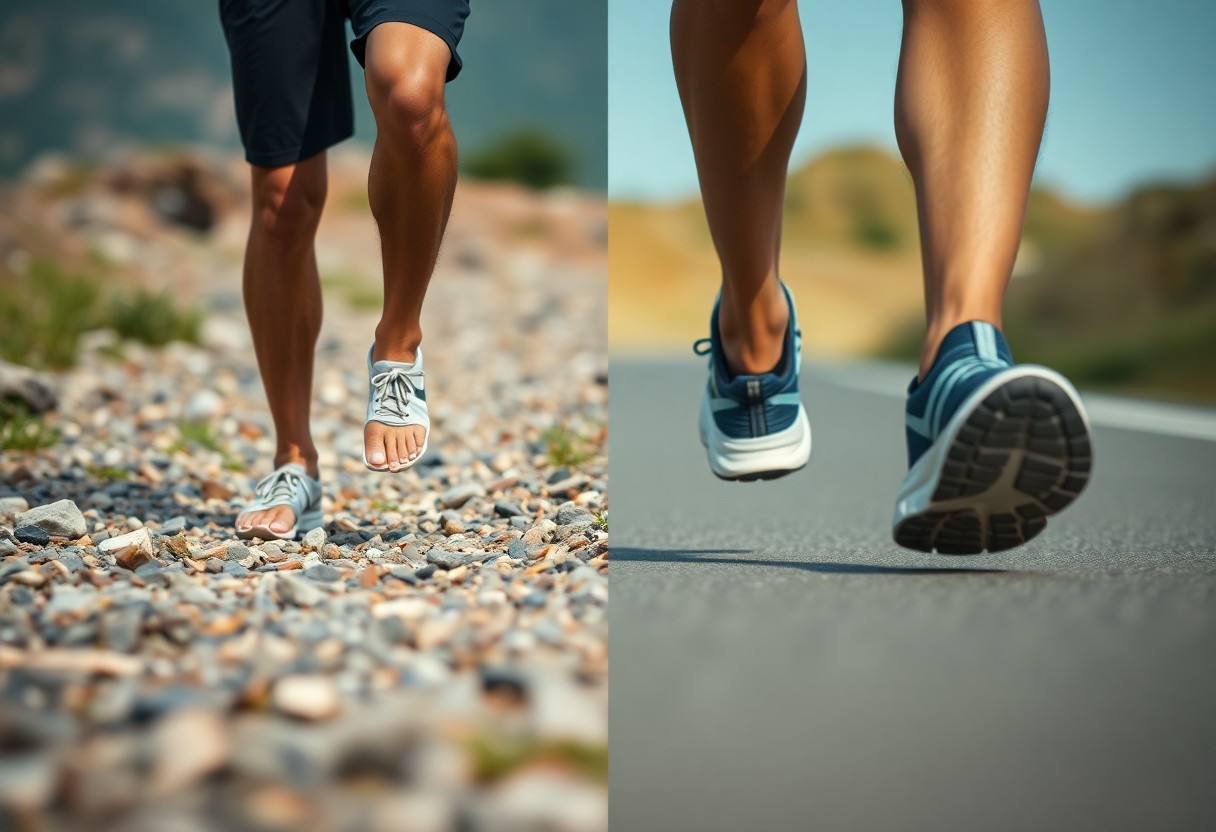
Injury Prevention Strategies: Key Insights from Longitudinal Research Studies
Longitudinal studies that investigate running injuries offer crucial insights into how various shoe types influence your long-term health. By comprehending the relationship between footwear and injury rates, runners can make informed choices that enhance their performance while minimising risks. These comprehensive studies monitor injury occurrences over time and scrutinise specific variables such as biomechanics, gait adaptation, and muscle strength, contributing to a holistic understanding of effective injury prevention strategies.
Assessing Tibial Stress Fracture Rates: Insights from a Detailed Two-Year Follow-Up (Hollander et al. 2021)
The study conducted by Hollander et al. (2021) revealed that runners utilising barefoot shoes experienced a markedly lower incidence of tibial stress fractures compared to those wearing cushioned footwear. Over a two-year observation period, participants in the barefoot group reported a 30% reduction in fractures, highlighting the potential benefits of adopting a more minimalist approach to running shoes. This finding suggests a possible link between improved proprioception and a reduced risk of injury, which is essential for runners aiming to maintain their health and performance.
Evaluating Patellofemoral Joint Loading: Important Long-Term Health Implications
Monitoring patellofemoral joint loading during running reveals that users of barefoot shoes often experience alterations in loading patterns, which may help mitigate the risk of developing chronic knee conditions. The absence of excessive cushioning encourages a more natural foot strike, thereby diminishing the impact forces on your joints over time. Researchers have noted improved biomechanics among barefoot runners, suggesting a potential protective effect against long-term injuries.
Investigating the influence of footwear on patellofemoral joint loading offers valuable insights regarding long-term ramifications for knee health. By opting for barefoot shoes, you may facilitate a more effective distribution of forces across each stride, resulting in reduced peak loads on your patellofemoral joint. One study discovered that runners transitioning to barefoot shoes significantly lowered their knee joint loading, consequently leading to less wear and tear on cartilage and ligaments. This adaptive mechanism can be crucial in preventing issues like patellofemoral pain syndrome, a common ailment affecting many runners reliant on cushioned footwear. Ultimately, the type of running shoes you choose can profoundly impact your joint health and overall injury prevention strategy.
Innovations in Footwear Technology: Transformations Enhancing the Running Experience
Recent advancements in footwear technology are dramatically altering the running experience by improving both performance and comfort. Innovative designs incorporate state-of-the-art materials and features that cater specifically to the diverse requirements of individual runners. From enhanced cushioning systems to adaptive fit technologies, today’s running shoes offer a plethora of options that can optimise your running economy while reducing the risk of injury. This evolution not only reflects a deeper understanding of biomechanics but also addresses the preferences and needs of various running communities.
Leveraging Pressure Sensor Mapping: Insights from the Latest Xero Shoes Models
Through the application of pressure sensor mapping technologies, the latest Xero Shoes models provide critical insights into foot dynamics. This groundbreaking approach evaluates how pressure is distributed during running, enabling you to make educated footwear selections based on your unique gait characteristics. By identifying pressure hotspots and optimising designs accordingly, Xero Shoes enhance your stability and improve overall performance across a variety of terrains, undoubtedly refining your running economy.
The Benefits of Moisture-Wicking Materials: Essential Enhancements for Marathon Performance
Moisture-wicking materials integrated into modern footwear are revolutionary for distance runners, particularly during marathons. These advanced fabrics efficiently draw sweat away from your skin, ensuring your feet remain dry and comfortable over long distances. Improved breathability aids in preventing overheating, while antimicrobial properties help mitigate odour, allowing you to feel fresh even amidst the rigours of competition.
During marathons, where you may be on your feet for hours, having shoes designed with moisture-wicking materials can significantly impact your performance. Technologies such as *Dri-FIT* or *CoolMax* enable rapid moisture evaporation, helping to prevent blisters and minimising the risk of your foot sliding within the shoe, which ultimately enhances your stability and comfort. With these advancements, you can focus on achieving your best performance instead of managing discomfort. In extreme weather conditions, selecting footwear with optimal moisture-wicking features is not merely a choice but a critical performance necessity.
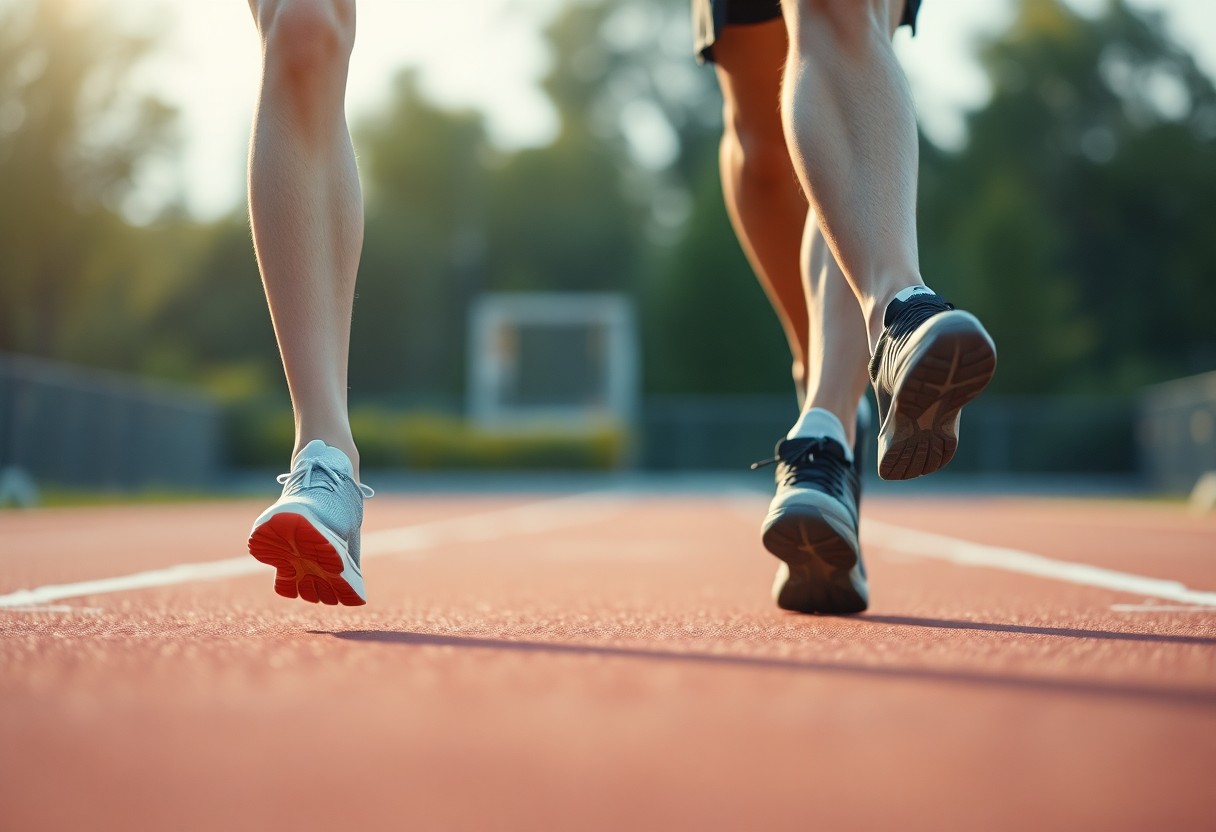
Essential Guidance for Runners: Choosing the Best Footwear for Enhanced Performance
Selecting the right footwear can profoundly affect your running performance and overall experience. Key factors such as your running style, frequency of use, and personal comfort are crucial when making your decision. Whether you favour barefoot shoes for a more natural sensation or cushioned options for additional support, prioritising how a shoe meets your specific needs is vital. Engaging in trial runs with various styles can aid you in discovering what works best for your unique running profile.
Evaluating Your Personal Running Style: Key Considerations for Effective Shoe Selection
Your running style largely dictates the type of footwear that will best meet your needs. If you are a forefoot striker, lightweight barefoot shoes may deliver the responsiveness and feedback you seek. Conversely, heel strikers typically benefit from additional cushioning to absorb impact. Observing your gait and considering crucial factors such as speed, distance, and terrain will empower you to align your shoe choice with your unique biomechanics effectively.
Impact of Terrain and Conditions: How They Influence Shoe Performance
The type of terrain you run on has a significant effect on shoe performance, impacting traction, stability, and comfort throughout your runs. Different surfaces, such as trails, roads, and tracks, require specific shoe features; for instance, trail shoes usually have deeper treads for enhanced grip, while road shoes focus more on cushioning for hard surfaces. Adapting your footwear to suit the terrain not only enhances performance but also reduces the potential for injury.
Your footwear selection also interacts with specific environmental factors, including ground softness, slopes, and weather conditions. Wet or loose surfaces require shoes with superior grip, while hard and flat surfaces may necessitate additional cushioning. Moreover, if you frequently run in diverse conditions, owning multiple pairs tailored for different environments will help sustain optimal performance and comfort. Investing in shoes with versatile attributes that can adapt to various terrains will enable you to tackle any running challenge with confidence.
Essential Perspectives: The Future of Running Footwear Choices
Adopting Minimalism in Running Footwear
As the running community increasingly embraces minimalist designs, you may find yourself drawn to the numerous advantages that barefoot shoes offer, such as improved proprioception and natural movement. This trend is supported by research indicating that runners can experience greater efficiency and lower injury rates when transitioning correctly to less cushioned footwear. The market, brimming with innovative products, suggests a future where your choices are influenced not only by performance metrics but also by a commitment to healthier, more sustainable practices. Striking a balance between cushioning and responsiveness will ultimately shape how you approach your next running endeavour.
Common Questions About Running Footwear
Q: What is the purpose of comparing barefoot shoes with cushioned footwear in relation to running economy?
A: The aim of this comparative study is to evaluate how different types of footwear—specifically, barefoot shoes and cushioned running shoes—affect running economy, which refers to the energy required for a specific running speed. By examining factors such as oxygen consumption, biomechanics, and foot strike patterns, researchers strive to determine which shoe type may enhance efficiency and performance for various categories of runners. Insights gained from this analysis can assist runners in selecting appropriate footwear based on their running style, distance, and personal preferences.
Q: What key factors influence running economy when comparing barefoot shoes and cushioned options?
A: Several critical factors impact running economy in the context of barefoot shoes versus cushioned alternatives. Firstly, the weight and flexibility of the shoe can significantly affect the energy expended with each stride. Barefoot shoes typically utilise minimal materials, promoting a more natural foot movement. Additionally, the impact on the surface and the stability provided by cushioning can alter biomechanics, potentially influencing energy return and muscle engagement during runs. Lastly, individual characteristics such as gait, foot shape, and running experience play significant roles in determining which shoe type fosters better running economy.
Q: Are there specific populations or scenarios where barefoot shoes may outperform cushioned footwear?
A: Yes, specific groups, such as experienced runners or those with a natural forefoot strike, may discover that barefoot shoes provide distinct advantages, as these designs can improve running mechanics and overall biomechanics. Furthermore, while training on varied terrains or during shorter distances, barefoot shoes could enhance proprioception and agility. However, it is crucial to recognise that transitioning to barefoot shoes should be approached gradually to mitigate injury risk. Newer runners or those engaging in higher-impact activities may find cushioned shoes more beneficial for reducing impact stress and providing added support during their runs.
The Article Comparative Analysis of Running Economy: Barefoot Shoes vs Cushioned Counterparts appeared first on My Shoes Finder
The Article Running Economy: Barefoot Shoes vs. Cushioned Footwear Analysis Was Found On https://limitsofstrategy.com

